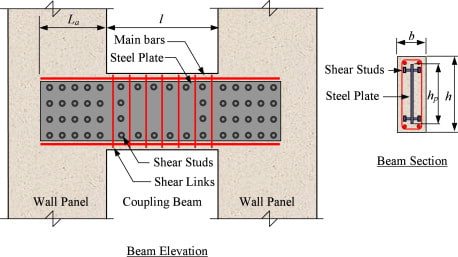KootK
Structural
- Oct 16, 2001
- 18,618
I'm looking to design a coupling beam just like the one shown below. I'd like assistance tracking down any relevant design guides that may be available and written to either North American or European Standards. What I already have is this:
1) Lots of north American stuff on wide flange reinforced systems, which is a bit different and;
2) Some excellent material coming out of China. Mostly research papers. The name Lam comes up a lot.
I'm happy to base my design upon these resources but, at the same time, if there's something available that's more "local" to north America, I certainly wouldn't want to fail to take it into account.

I like to debate structural engineering theory -- a lot. If I challenge you on something, know that I'm doing so because I respect your opinion enough to either change it or adopt it.
1) Lots of north American stuff on wide flange reinforced systems, which is a bit different and;
2) Some excellent material coming out of China. Mostly research papers. The name Lam comes up a lot.
I'm happy to base my design upon these resources but, at the same time, if there's something available that's more "local" to north America, I certainly wouldn't want to fail to take it into account.

I like to debate structural engineering theory -- a lot. If I challenge you on something, know that I'm doing so because I respect your opinion enough to either change it or adopt it.
